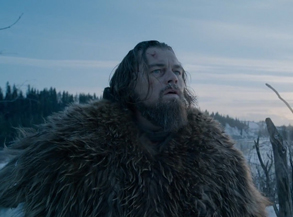|
|
Movie Review: The RevenantBy Ben GruchowJanuary 13, 2016
The second structural set piece consists of the vicious mauling Glass takes at the hands of a grizzly bear, and it’s this one that sets the remainder of the story in motion. Grievously injured, Glass is left for dead by his none-too-willing teammates. We then follow him over a rather unspecified period of time as he attempts to find his way back through miles of sub-freezing temperatures and Arikara territory to his party’s barracks. The third and fourth structural set pieces constitute the most and least surprising instances of action, respectively, and I’ll not go into detail on them. All very straightforward, very linear, very simple. One of the most impressive things about The Revenant, actually, is the way Iñárritu and DiCaprio coax such impact out of comparatively little; there’s not a lot going on here on a narrative level, and you can see the bones and cartilage of any number of generic man-against-the-wilderness movies poking through with some visibility. This one doesn’t even necessarily rise up to their level on all counts; as long as we’re on the subject of the movie’s shortcomings, we might as well address the fact that the storytelling in evidence is really just average, with a couple of diversions that arrive at outright laziness. A crucial encounter toward the final act depends on an abrupt and obtuse character introduction; all it really does is give us a clear shape of what we can expect at the climax. The effect of the climax itself is wholly contingent on various parties arriving at a precise place at a certain time. There’s a tremendously thin line between thematic development and deus ex machine when it comes to a film like this; Iñárritu stays on the better side of that line, but only just.
|

|
|
|

|
Thursday, October 31, 2024
© 2024 Box Office Prophets, a division of One Of Us, Inc.


